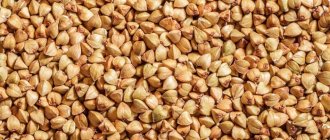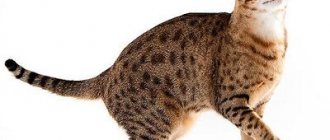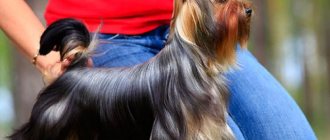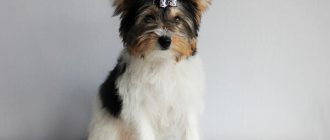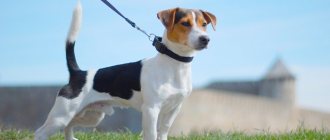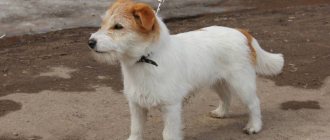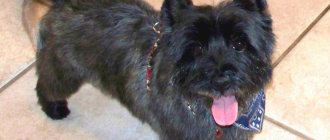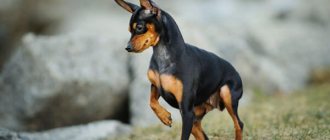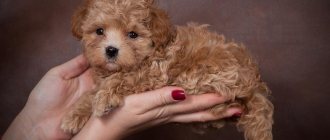Czech Terrier is a dog of contrasts. Small but strong; lively but calm; Determined yet obedient, this dog is a well-rounded hunter and a good family dog. Such a treasure is hard to find, as the Chesky is one of the rarest dog breeds in the world.
The Czech Terrier is the national dog of the Czech Republic. Cesky is pronounced “chess-kee,” and the word literally means Czech—which is appropriate since the breed originated with a Czech. Czech Terriers have long, silky coats in varying shades of gray. The characteristic bangs fall from the forehead and cover the eyes.
Characteristics of the Czech Terrier
| Attachment level | High |
| Friendliness | Average |
| Child friendly | High |
| Loyalty to other pets | Average |
| Exercise needs | Average |
| Playfulness | Average |
| Energy level | Average |
| Learning ability | High |
| Intelligence | High |
| Tendency to bark | Average |
| Shedding amount | Average |
Character and habits
The Czech Terrier is famous for its calm disposition. He is kind and affectionate, but at the same time very brave and persistent. His distinctive side can be called a sense of dignity: unlike other terriers, he will not bark in vain or bother his owners if they are busy. The dog is balanced, obedient and capable of training. He is also moderately active, but will not refuse long games, since it is important for him to communicate with his owners. It’s not enough for him when most of his walks are short and without entertainment.
History of the Czech Terrier
The idea of creating the perfect dog may seem far-fetched, but Frantisek Horak, a hunter from Prague, had a vision for a new breed of dog. In the mid-19th century, Horak decided to begin a breeding program for a terrier that would be an adaptable hunter, but an easy and trainable companion.
Some terriers, being consistent hunters, tend to be stubborn and independent. The breeder's goal was to produce a small terrier that could hunt alone or with a pack, and would also be more docile and obedient.
To realize his idea, Horak began selectively breeding Scottish Terriers and Sealyham Terriers, which had the ideal type and traits for this new breed.
Although unconfirmed, there is some speculation that the Dandie Dinmont Terrier and Wirehaired Dachshund also contributed to the Chesky gene pool. This is not hard to believe since Dandie Dinmonts are known for their obedience and Dachshunds have a long and low build with the ability to hunt large and small game.
Despite the problems that many breeds experienced during World War II, when breeding populations were depressed and resources were limited, Horak ensured that the progress he made with the Czech Terrier was not stopped. In 1963, the Fédération Cynologique Internationale (FCI) granted this breed official recognition.
Education and training
The Czech Terrier is not difficult to train. However, at a young age, difficulties may be associated with his playfulness and curiosity, which distracts him from his activities. It is very important to find good motivation, conduct classes in a playful way and do not forget about positive reinforcement, which can be goodies or toys.
In raising and training a young Czech Terrier, owners will have to be as patient as possible and devote a lot of time to the dog. The reward for your efforts will be an obedient, pleasant companion, with whom you can engage in various sports if desired.
Terrier training begins no earlier than 6 months, provided that he is trained in basic commands and carries them out regardless of external factors.
Care of the Czech Terrier
Chesky is a great companion, ready for adventure or friendly gatherings on the couch. They are a great choice for apartment dwellers but are happy to run and play outside in the yard.
These terriers have an intelligent nature that needs to be properly directed in order to stop hooliganism and mischief. Compared to many other strong-willed terriers, Czechs are more docile and calm, making them an ideal pet.
Their willingness to please makes this breed especially easy to train. They generally pick up the basics of house training and obedience quite easily.
As a terrier, he can be stubborn and independent, so regular training and maintenance of his master's authority are necessary. Given their level of intelligence, these dogs love to learn new tricks, and this is a good opportunity to strengthen your bond.
The small but active breed needs long daily walks and runs, and he will be able to accompany you on long hikes. The only limitation is the Czech Terrier's short stature; it is difficult for him to climb rocks or overcome river crossings. It is best to keep your dog on a leash due to his hunter instinct to avoid a wild chase or other trouble.
These dogs are affectionate and friendly with family members, but reserved and even aggressive with strangers.
The loud bark compared to the Czech Terrier's relatively small size serves as a good warning of intruders, but that's all this breed has to offer as a watchdog.
This dog gets along well with well-mannered children and can be accustomed to the company of other animals. Proper socialization is of great importance, especially with cats and dogs of the same size, as they themselves can be bossy.
It is important to avoid companionship with pocket pets such as gerbils, hamsters, ferrets, etc., as these small creatures can easily trigger a terrier's prey drive.
The Czech Terrier has a long and silky coat. She requires fairly frequent bathing and brushing every few days to remove dirt, prevent matting and minimize the effects of heavy shedding.
Approximately every 6-8 weeks (depending on your dog's coat) you will need to have your dog professionally groomed, preferably using clippers rather than cutting.
Content Features
Due to its small size and cleanliness, the Czech Terrier is perfect for living in a house or even a small apartment. It is possible to keep it outside, in a spacious enclosure, but not on a chain. The Czech Terrier does not shed, which is a significant plus for lovers of cleanliness.
Needs close contact with the owner and good physical activity. Regular walks around the house are not suitable for the Czech Terrier. He is too active and inquisitive, and also has a pronounced hunting instinct, which cannot be strongly suppressed, but must be controlled. It is important to give the dog the opportunity to run freely in nature, swim, and at the same time make sure that it does not run away when it smells a scent and does not climb into some hole.
Care
The coat of the Czech Terrier is somewhat softer than that of other wire-haired Norks, so the dog is not trimmed, but clipped. The hairstyle of “domestic” terriers is limited only by the owner’s imagination. The exhibition must meet the requirements of the standard. The head, upper body and tail are cut short, no more than 1.5 cm. On the legs and lower body it remains long enough to form a neat skirt. Eyebrows, mustaches and beards are left on the muzzle. Long, soft hair is prone to matting, so it is important to brush your dog regularly. Bath as needed. Chekhov, who live in a house or apartment, once every 7-10 days. Street, usually after a haircut.
If the dog does not participate in exhibitions, a short summer haircut will reduce the need for grooming to a minimum; the coat is allowed to grow for the winter.
Grooming also includes caring for the dog's ears, eyes, teeth and claws. Eyes are rubbed only if necessary. Ears are cleaned once a week or less, teeth 1-2 times a week, nails are trimmed as they grow.
Nutrition
The Czech Terrier is known as a big glutton among owners and breeders. He is absolutely not picky about food, and his insatiable appetite and love for goodies should be constantly monitored. Naturally, overeating can lead to excess weight gain and related problems. A natural diet should be formulated according to standard rules for dogs, taking into account age, physical activity, size and other physiological characteristics. As for ready-made food, the Czech is suitable for diets for small breeds of dogs that lead a normal lifestyle.
General health problems
Originating from careful breeding of purebred mutts, the Czech is known as a healthy breed with few common health problems.
Sometimes these dogs have Scottie's cramp, a disorder inherited from the Scottish Terrier bloodlines used to develop the breed. Scottie's cramp in its milder forms is not life-threatening or long-lasting; the episode usually resolves in about 30 minutes or less.
There are several other genetic diseases of the Czech Terrier that you should be aware of:
- Patella dislocation
- Progressive renal atrophy
- Cataract
- Heart problems
Description
The Czech Terrier is a small dog of moderately elongated size. He may appear stocky, but he is rather muscular and robust.
At the withers, dogs reach 25-32 cm and weigh 7-10 kg. A distinctive characteristic is the coat: soft, long, fine, silky, slightly wavy in texture. On its muzzle it forms a mustache and beard, and thick eyebrows on its eyes.
The coat color is mostly gray with black pigmentation. A rarer color: coffee brown with black pigmentation on the head, beard, cheeks, ears, paws and tail. White and yellow spots on the head, neck, chest, and paws are acceptable. Puppies are born black, but gradually the coat changes color.
How and what to feed
Feed your dog a balanced diet without overfeeding or giving him treats at mealtimes. These dogs love to eat, so it's important to have a routine and not let them overeat. This breed does not suffer from food allergies, so they can eat any high-quality food.
pros
- Easy to train, obedient
- Good with children
- Less nervous than other terriers
Minuses
- May be dominant or aggressive towards smaller animals
- Strong prey drive
- May be shy without proper socialization
Health and life expectancy
Czech Terriers rarely get sick if you pay attention to the issue of disease prevention. Genetically, the breed is considered healthy, but it cannot be said that it is absolutely free of hereditary diseases. Typical ones include:
- Dislocation of the kneecap;
- Scotch Terrier seizures caused by a lack of serotonin;
- Lens luxation.
In old age, it is possible to develop senile diseases, including heart and kidney failure, malignant and benign tumors, problems with joints and gastrointestinal tract. To maintain health, it is important to promptly treat your Czech Terrier for external and internal parasites, vaccinate according to the schedule, and undergo a full medical examination from time to time. Life expectancy is usually between 12 and 15 years.
Nutrition
Czech Terriers are big eaters. They are not at all picky about food, and are ready to eat anything that comes their way. But you should not follow the animal’s lead and feed it large portions at any time of the day. The diet must be strictly followed. An adult terrier should be fed twice a day, after a walk, so that the dog has the opportunity to lie down and rest after eating. There should be no snacks between meals. Never train your dog to be near you when you eat. Remember that food must be of high quality, fresh and healthy. Dogs should not be given sweets or yeast baked goods, even occasionally as rewards. Treats should be chosen in specialized stores. In addition, dogs should not eat fatty, canned or pickled foods; dishes that contain spices, as well as all kinds of sausages. A dog's diet should include meat, fish, cottage cheese, eggs, cereals (buckwheat and rice), fruits, vegetables and herbs. In addition to these products, you can give your dog additional vitamin complexes. However, first consult with your veterinarian about which vitamins are needed for the full development of your pet.
Where to buy and price
Pros and cons of the breed:
The most popular kennels where you can buy a puppy: Biu Mar Shi, Flying Spitz and Stopsary. Price from 20,000 to 35,000 rubles. Puppies in nurseries are distinguished by their health, they receive all the necessary vaccinations on time, and have documents. If you wish, you can meet the baby's parents.
The Czech Terrier is one of the youngest dog breeds - the beginning of its history is considered to be the 20th century. This rare representative of the animal world has an unusual appearance, positive disposition and active behavior. In the family, this sociable creature is everyone's favorite.
Attitude towards animals
Often people who purchase a Czech Terrier already have other pets at home. These could be dogs or cats. “Czech” treats them friendly and regards them as his comrades with whom he can frolic. Therefore, we can say that representatives of this breed are non-conflicting. If there is a quarrel between other animals, the Czech Terrier will prefer not to be a participant in it and will watch the situation on the sidelines. But do not forget that this breed was bred as a hunting breed, so the dog perceives all kinds of rodents as prey and can harm and even strangle them.
Dog diseases
The Czech Terrier is a healthy dog. He rarely catches colds and is adapted even to cold climates. If you carefully monitor your diet and don’t let your dog pick up scraps, you can protect him from intestinal infections and digestive disorders. To protect against infectious diseases, vaccinations are required.
Czech Terriers have a hereditary nervous system disorder called Scotty Crump Syndrome. He inherited it from a Scottish ancestor. It manifests itself as sudden convulsions during physical or emotional stress.
After the attack, the dog returns to normal again; this does not in any way affect its further behavior or health; terriers do not die from seizures. The average lifespan of a dog is 10-12 years. With proper care and a healthy diet, the Czech Terrier can live longer.
Reviews about “Czechs”
Although there are still few dogs of this breed in our country, those who managed to acquire this pet are satisfied. Dog owners share that they are very unpretentious in their diet. This breed is also perfect for keeping in an apartment, since its representatives do not shed and are very friendly and sociable. Other owners say that they live in the house and their Czech Terrier plays the role of an excellent watchdog. Therefore, those who are thinking about purchasing this dog can rest assured of his devotion and pickiness.
Feeding
A balanced diet for a dog is an important component of good health, proper metabolism and energy of the pet. The owner needs to make a key choice of the type of food - natural or industrial, then everything will depend on the individual characteristics of the pet.
Good quality industrial feed contains all the necessary substances, vitamins and microelements for the full growth and development of the animal. Products are selected strictly according to the physiological needs, age and weight of the dog. Secondary selection criteria are coat type and temperament. You shouldn’t even think about inexpensive food, because this method of feeding is more convenient for the owner, but it is harmful for the dog! Expensive and high-quality food is not always accepted equally well by dogs, so you should not buy new food for future use.
